Are you looking to start recruiting interns?
Internship programs, while something of a rite of passage for pre and post graduates, also carry many benefits for companies.
As a matter of fact, by nurturing an internship program and training them with relevant skills, it is very likely to have already found your next full-time hire.
According to Zippa, when giving interns an offer at the end of an internship program, “80% of them accept that offer and become employed by the company they interned with.”
Part of why it works so well is precisely because internship programs are mutually beneficial. But in order to reap these rewards, which goes both ways, you need to do it right (i.e. Follow these best practices!)
TL;DR – Key Takeaways
- Internships are beneficial for both companies and interns, as a great way to bolster your company’s productivity while training fresh graduates for the working world.
- Still, there is the potential for disadvantages, such as poor performance from uninterested or unprepared interns, and the cost of the program if not done properly.
- There are many different ways to recruit interns. Traditional methods include job boards, social media, employee referrals, and campus recruitment events. But to stand out in a crowded space, companies can gain from more creative recruitment tactics.
- Another important factor to consider when attracting talent is to understand and offer interns what they value most, and be clear on what the intern will gain.
- Although nearly 40% of internships in the United States are unpaid, offering unpaid internships is no longer advised, as it is a discriminatory practice.
- So, to make the most out of your internship programs, it’s recommended to apply the latest best practices. We’ve handpicked 10 of them.
- Starting with understanding the ideal candidate profile, tips on leveraging social media strategically, how to assess, advantages of adding structure, proper onboarding, and more.
- Finally, to pinpoint top-quality interns, incorporate skill tests and upgrade your intern hiring process, using our test library full of role-specific skills assessments.
And with all of that in mind, let’s get nitty with the pros and cons of hiring interns.
Why recruit interns?
Well, how much time do you have? First and foremost, the lion’s share of job seekers looking for internship positions are, of course, fresh college (or general tertiary education) graduates.
This means that they are already trained on the most up-to-date educational resources compared to other job seekers. However, since they have little to no job experience, they’re also highly motivated to learn.
Most candidates applying for internship programs right now are part of Generation Z, though it’s not uncommon to receive applications from more mature applicants, such as millennials looking to switch industries.
But what sets Gen Z apart is that they have been raised in the digital age, with many already highly skilled in the likes of social media and new technologies.
Benefits of hiring interns for your organization:
- A chance to evaluate skills — Before making the intern an offer for a permanent position, you’ll have adequate time to get to know them and what they’re capable of achieving during the trial period.
- Many candidates to pick from — Since internships are often generalist-type, you can receive between 20 to 200 applications for the ideal candidate to choose from.
- A fresh perspective — Interns bring with them a fresh perspective, whether it’s from their recent or ongoing education or just a different view on life.
- Attract new talent — An internship is a two-way street. You’ll have the opportunity to show off your organization and its inner workings to prospective talented new hires before any of your competitors.
- They’re tech-savvy — As we said earlier, Gen Z is a tech-minded group that may help your organization adopt more current technologies and systems.
- Increased productivity — Interns offer a bundle of enthusiasm, knowledge, and fresh perspectives, making them valuable assets to any organization. Having these eager employees join your teams can actually help boost overall productivity.
- Saves the company money — Because of the nature of the short intern period and their lack of experience, they cost less than other full-time employees, which saves the company money. However, that doesn’t mean you should underpay or offer free internships (more on that later).
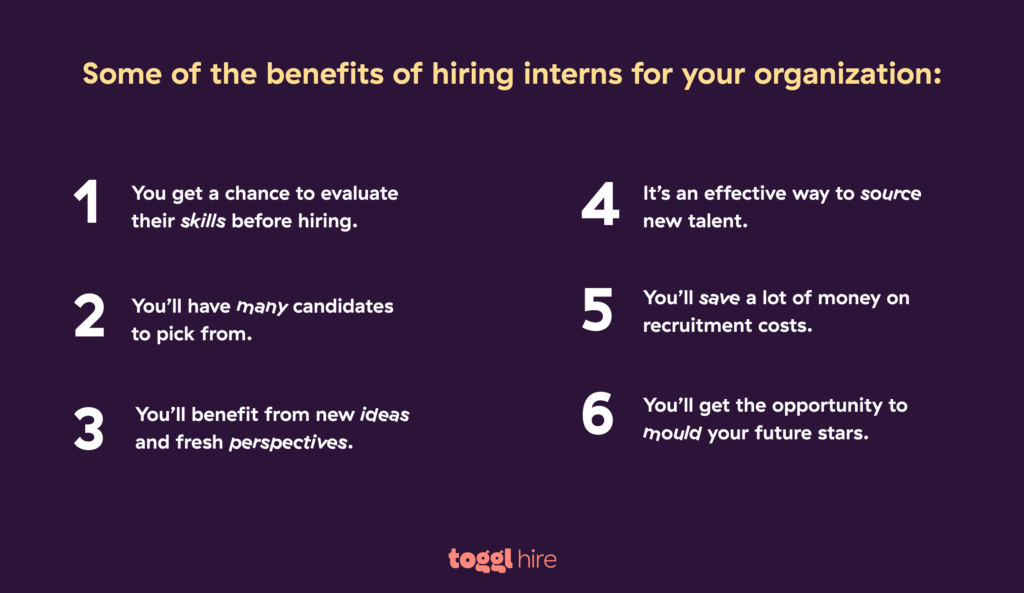
The disadvantages of hiring interns
For every ying, there is a yang. And that applies to internship programs too. While a solid internship program carries a healthy range of benefits, be careful of these potential disadvantages:
- A lack of experience — That’s right, most interns won’t have any experience in the workplace or your industry, and while that’s not necessarily a negative, in some cases, it can be.
- Cost of program — Hiring an intern is not free, so you’ll need to budget appropriately and think carefully about the return on investment that you’re looking for.
- Short working period — 56% of interns in the US accept job offers from their companies, which means just under half of your internship cohort will soon be leaving you.
- Poor performance — Not all interns are ready to take the working world seriously. In other cases, internships are a required component of a degree qualification, where you could end up with someone who just doesn’t want to be at your business.
- Time to train — Since there’s a lack of skills, it will take extra time to get them up to speed and trained up in their roles, as opposed to a junior or mid-level new employee.
What is the best way to recruit interns?
Now that we’ve seen why companies recruit interns, and have a better feel for the pros and cons, let’s look at how to recruit them.
Well, as with any other position in your organization, it all starts with advertising the role.
The different ways you can recruit interns
Where to find your next intern may just depend on which industry you are in. Let’s take a look at some of the most common ways and approaches to intern recruitment.
- General job boards — Job boards (like Zip Recruiter, Indeed, and Career Builder) are still some of the best places to find new employees, especially when you’re looking to cast a wider net.
- College job portals — In addition to traditional job boards, you can use the likes of Handshake and College Recruiter that specifically focus on helping students find jobs.
- Social media — Advertise the position on LinkedIn, Facebook, Twitter, Instagram, and even TikTok. Though, the latter two may be better used to show off your company culture.
- Out-of-home advertising — Because most interns are busy commuters, putting up postings in bus terminals, and subway stations, or handing out flyers near college campuses is an effective way to advertise internship opportunities.
- Employee referrals — Your current employees are another valuable resource if you can encourage them to refer their friends and acquaintances to the intern role.
- Job fairs and campus recruitment events — You don’t just have to attend job fairs for full-time employees – there are plenty of job fairs that focus on interns too – or why not kill two birds with one stone!
- Niche platforms — Your industry might have its own job boards and job sites to tap into, such as Kaggle for those in the data science field.

How to snag the best interns
Like finding your perfect match, the best way to find the perfect intern (or interns) is to understand and offer them what they value most, namely:
- Exposure and experience within the industry
- The opportunity to learn from leadership
- Good references (which include letters and testimonials)
- Adequate compensation
- Full-time employment
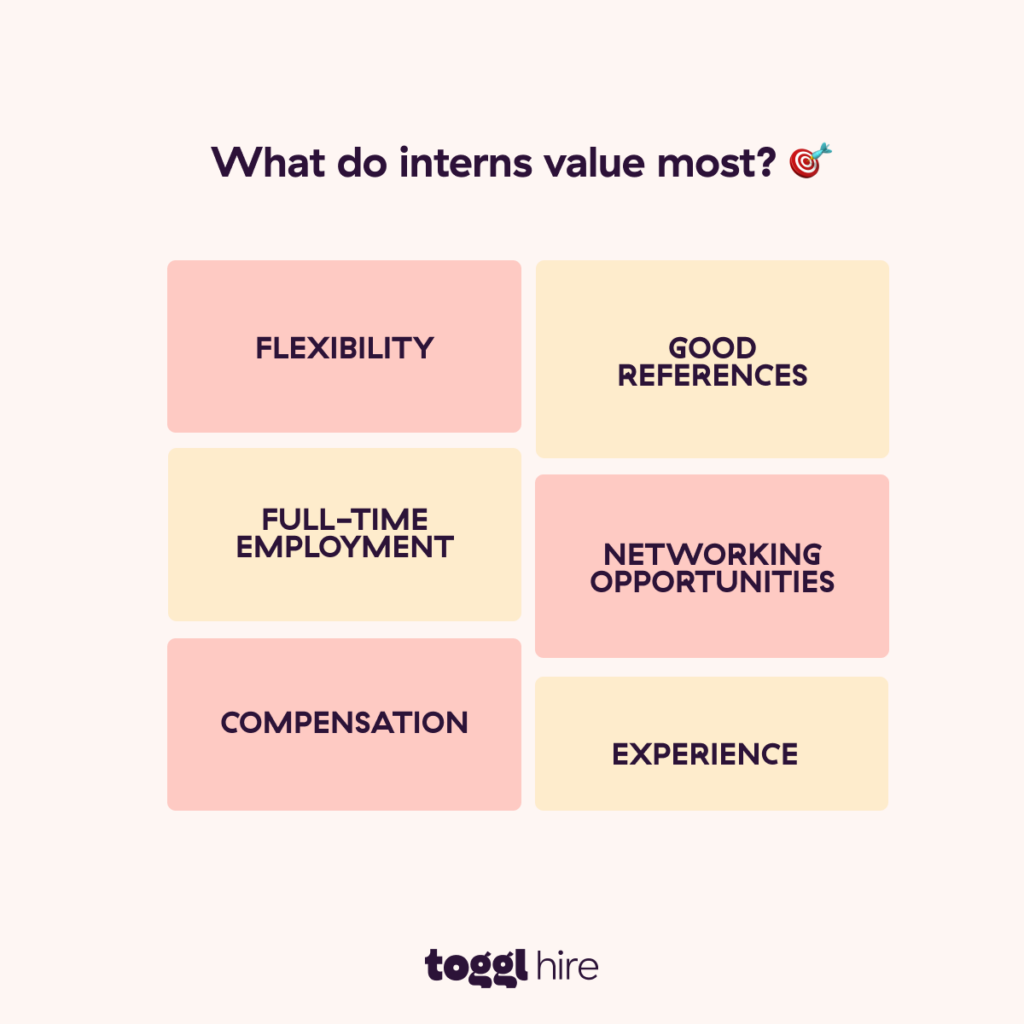
Tip! Of course, each organization has its own ways and processes when interviewing and hiring new candidates, but to help you along, check out our guide to the 7 Recruitment Best Practices for 2023.
10 Best practices to follow for a successful internship program
Next, let’s dive into the 10 best practices companies are using to kick off their internship programs and smash their goals:
1. Understand the ideal candidate profile
It helps to think about what your ideal intern looks like. Are you looking for a person to train that you can eventually hire full-time, or do you simply need extra hands on deck?
Some questions to consider when building your candidate profile:
- Which college major or level of education should they possess?
- Are you looking for college students, college graduates, or other?
- What soft skills do you require? For example, how should they collaborate with others and work in a team?
- Will they need any hard skills, such as accounting, coding, design, or writing?
- Do they need research experience?
- Do you need them to work a full day or for only a few hours?
- Do they require references from their lecturers or professors?
- Do they have the initiative to take on their own tasks?
- Where are they located, and is remote work possible?
Tip! Understanding your ideal candidate persona makes it easier for you to craft the perfect job description.
2. Use social media for targeted search
We have already looked at the many ways to find potential hires, which includes social media as a key channel to target the untapped talent you’re after.
You can also use social media in combination with a targeted recruitment strategy, which is essentially the sourcing of candidates for a specific role.
This strategy is particularly effective for technical positions that require a particular background and skill set. And allows hiring managers to focus their intern recruitment efforts better, saving time and costs by narrowing down the candidate search.
When using social media to find interns, it’s not only about using the channel to advertise the role but also how you advertise and portray your company’s brand.
So it may be best not to rush out and create that new post on LinkedIn — without first considering the following questions from the perspective of an intern:
- Will the organization benefit my career?
- Will I learn new skills?
- What experience will I gain?
- What will my average day at the company look like?
- How long will the internship program run?
- Can I earn additional college credit from this internship program?
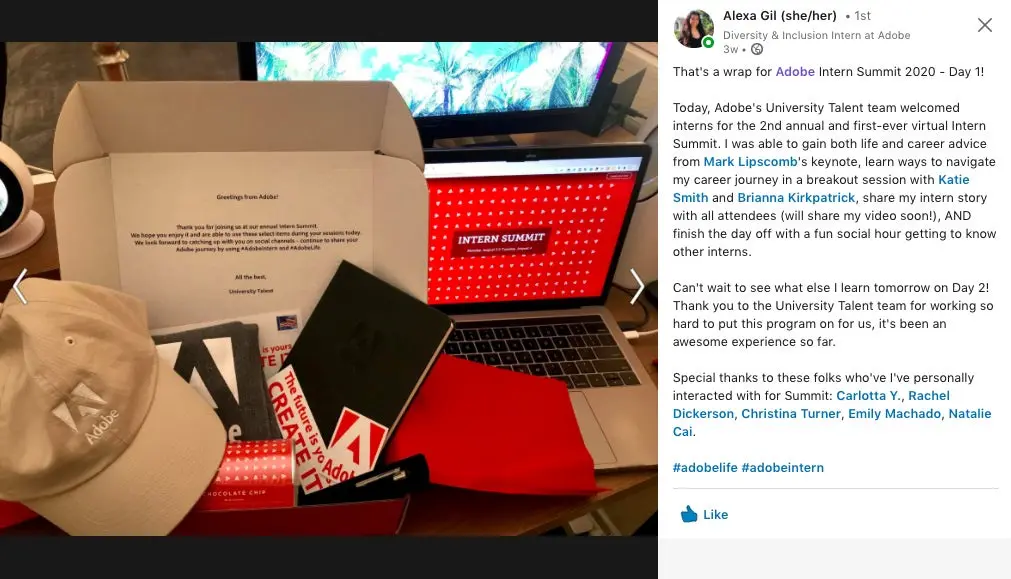
3. Define your assessment criteria
Traditional assessment methods like looking over their CV and LinkedIn profile won’t work the same for an intern — as they won’t have much experience.
Instead, depending on the department they’ll be working in, you can take a different approach to assessments. For some, it may be relevant to look over their personal site, their GitHub account, or which courses they’ve already taken.
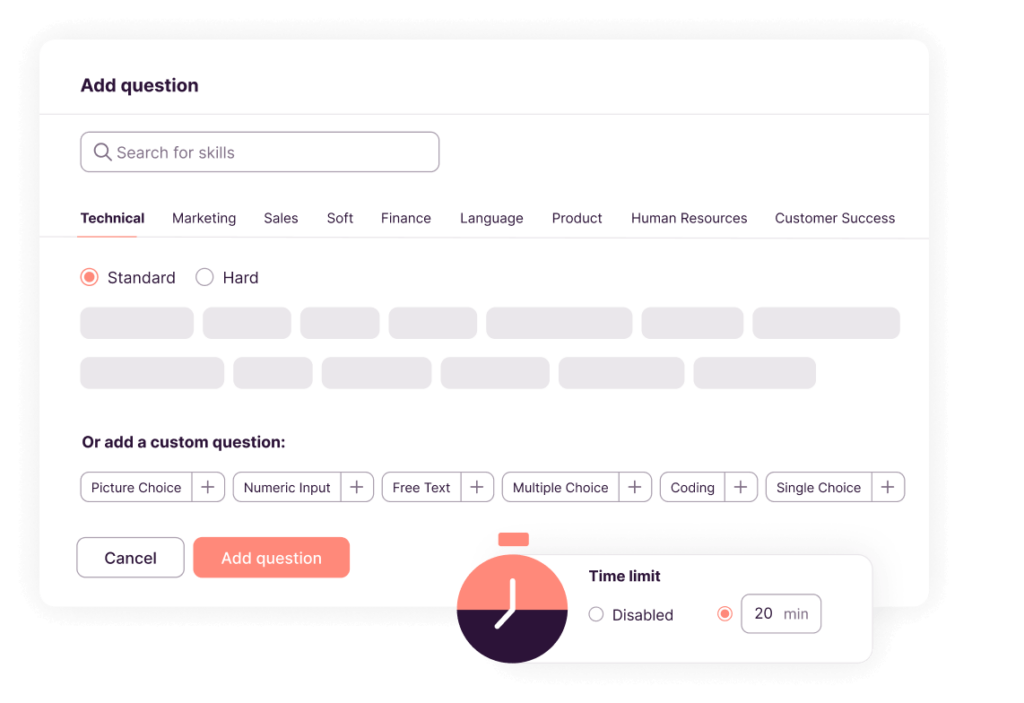
While for others, you might prefer to judge their skills by a different metric, using pre-employment skills testing to help you hire the right interns for your company.
Browse our library of ready-made skills test templates to find what you need!
4. An internship is a paid internship
It may be tempting to just hire an unpaid intern, but not everyone can afford to work for free.
80% of employees from all the Big Four accounting firms have internship experience, and the same goes for tech companies like Facebook, Google, and IBM. Making it clear that internship experience is a valuable asset and, therefore, should be accessible to all.
Chegg Internships | Source
Offering a paid internship helps to ensure that your doors are open to a wider range of applicants, while also showing that your company is a great place to work and values its employees.
5. Follow good employer practices in general
To keep your employees happy — and thus create positive word-of-mouth about the company that employees can boast about — ensure you are following these practices:
- Provide regular feedback sessions on employee performance.
- Always follow common labor laws. If you are hiring remote workers, research which laws will apply to them.
- Create a work-life balance where employees don’t need to stress about receiving messages from their managers after hours or while on vacation.
- Show respect to all employees, regardless of role.
6. Add structure to your internship program
A structured internship program can offer significant advantages to both interns and companies.
Adding structure helps outline intern expectations and responsibilities, and specify what training interns will receive to hone new skills and gain practical experience.
It can also foster loyalty to the company, increasing the chances of interns accepting a job offer at the end, should one be extended.
Moreover, structured internships ensure consistent quality of work. And when interns are given clear expectations and appropriate training, they require less supervision.
Here’s an example plan you can use to add structure to your internships
| INTERNSHIP SKILLS | PROJECT PLAN | MID-POINT CHECK-IN |
| Copywriting skills | 1. Research pop culture trends and draft SoMe posts 2. Write copy for Linkedin ads 3. Draft a monthly Product Round-up email | |
| SEO Basics | 1. Perform keyword research following internal guidelines 2. Carry out linkbuilding campaigns following best practices | |
| Platform knowledge | 1. Receive training on various marketing platforms 2. Use platforms to deliver tasks independently from start to finish | |
| Communication skills | 1. Gather project requirements from internal stakeholders 2. Deliver weekly progress updates 3. Create internal written documentation | |
| Collaboration | 1. Work cross-functionally and as part of a team 2. Work with designers to prepare SoMe visuals following brand guidelines |
7. Allow time for proper onboarding
As the old saying goes, “Slow and steady wins the race.”
If you would ease a senior-level engineer into their role, then the same courtesy should be shown to your interns. A successful onboarding experience is essential for new hires to transition into their roles and assume the company culture. Here are a few tips:
- Create an in-depth onboarding plan that includes adequate meet and greets for various stakeholders and departments, initial training, and regular feedback sessions.
- Allow the intern to ask questions to gather their own knowledge.
- And why not also treat them to at least one meal when they start? “Breaking bread” is a fantastic way to conduct introductions and break the ice.
If you’re a bit stumped when it comes to onboarding, we also wrote an article about 10 awesome new employee onboarding ideas.
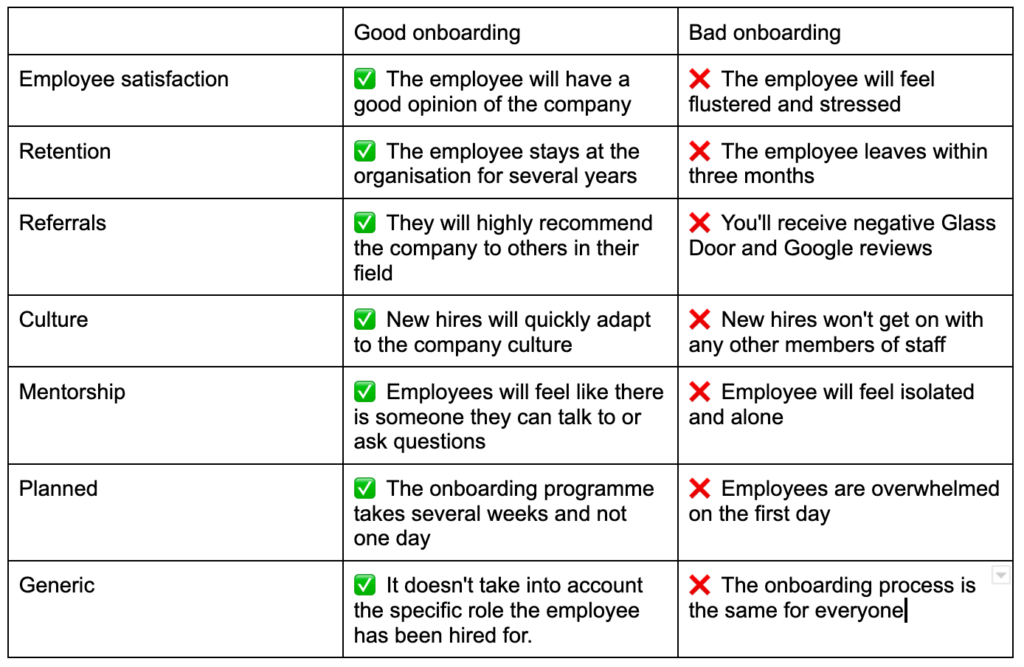
8. Treat them like real full-time employees
Interns don’t need special attention. Quite the contrary. You should treat them like regular, current employees because, after all, they are employees. But also because:
Internships allow the candidate to gain valuable job insights and to learn as they go, so to speak.
The internship isn’t about the adage of having someone to fetch coffee for the team. They’re a valuable part of the organization that helps to build and fill in skills gaps within various teams.
So, it makes sense to integrate them into the team and give them challenging, purposeful work that fits their interests and objectives.
When interns feel valued, respected, and part of the team, they are more likely to accept post-internship job offers and become an asset to the company.
9. Don’t expect interns to know everything
Your new interns will come armed with plenty of knowledge, facts and stats, and everything else they read on your company website. But unlike your veteran employees, they won’t know every little thing about the company or the market, and so it’s totally normal if it takes them a bit of time to get up to speed.

To give them the support they need, assign a buddy or mentor.
This will help whenever they have questions or need to know something. And mentors are essential when it comes to upskilling interns to take on more challenging projects.
10. Give and gather feedback – and be clear about the next steps
Probably the most important best practice to follow that should not be ignored is feedback.
Feedback is a two-way street:
- It allows the intern to use their fresh perspective to find any gaps or broken workflows in the organization.
- It helps you to keep improving your hiring process and business so that you retain talent for longer.
Tip! Consider when is the best time to start gathering feedback, and make sure to gather intel on the entire candidate experience so that you can keep on improving it.
Bonus! 4 creative ways to recruit interns
Now for a bonus section to help you find awesome interns. Here are a few creative ways that other companies have used for their programs.
1. Advertise where they are
Use the latest social media channels, like Snapchat and TikTok, to reach and attract new talent. For example, in 2016, Goldman Sachs used Spotify to advertise its internship program.
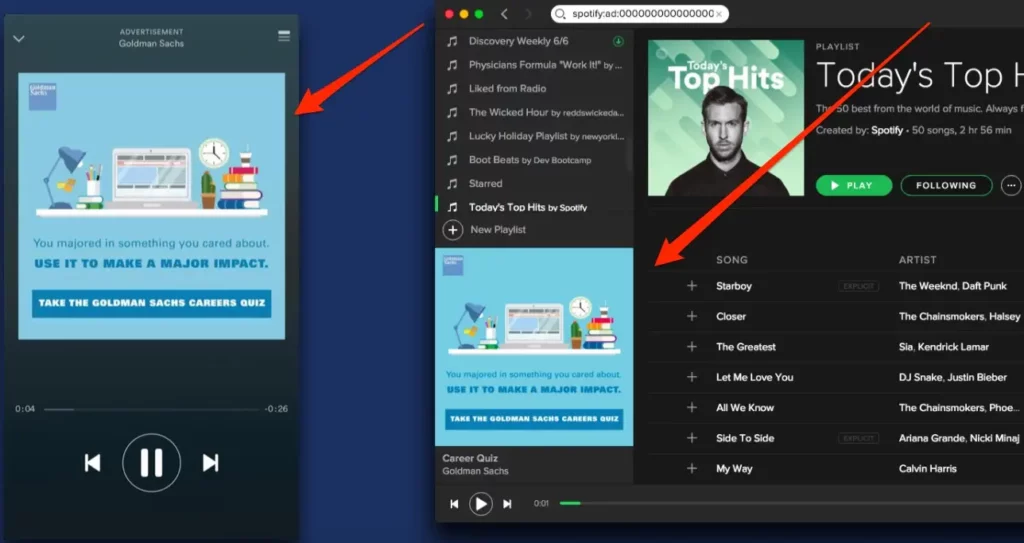
Just try not to make any videos that will make your company look ‘cringe.’

2. Lead with pay and benefits
Stand out from the competition by stating the intern salary and benefits upfront. Don’t bury this info — or only reveal it during the interview — make sure it’s bright, bold, and easy to find. You’ll often see up-and-coming tech companies advertise this in their LinkedIn ads.
Don’t forget to include creative perks to help attract your target demographic.
3. Host a hackathon
Did you know that some companies hold hackathons (timed product creation events) to find and hire interns? It’s something that PayPal has been involved in for quite a few years.
“They get to learn about our products and our company. We get to see what they are able to produce.”
said PayPal’s Chief Technology Officer James Barrese
McKinsey & Company partnered with Remote America Alliance to further understand the benefits of skills tests when hiring.
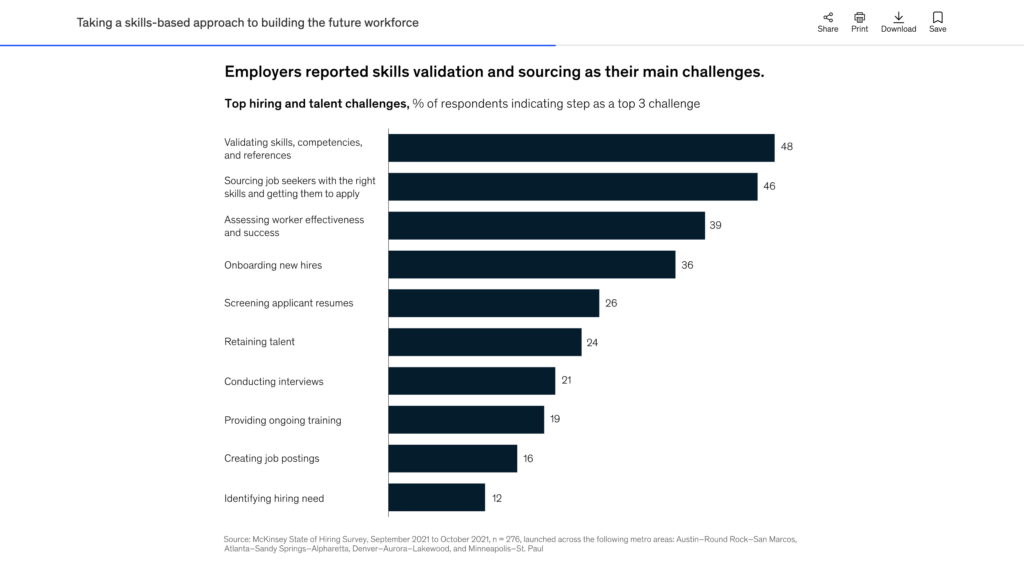
4. Leverage virtual internship programs
Expand the way you find new interns by hiring remote workers. Virtual Internship is a startup that uses AI to match interns with a wide range of companies, all the way to giants like AWS.
By hiring remote workers, you can save on costly office space and have a team of diverse people from around the world.
Save time recruiting interns with Toggl Hire
It’s easy to see how hiring interns can benefit your company in a variety of ways.
With the use of a well-thought-out and structured program, you can maximize these benefits and train some of the best minds of tomorrow.
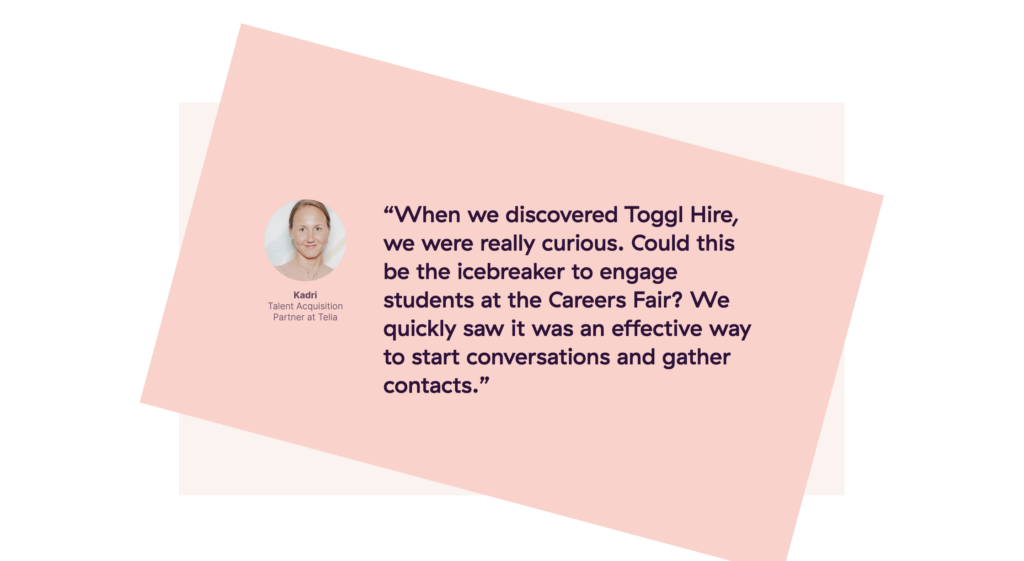
How do you structure an intern program easily? With Toggl Hire, of course. Recruiters can use Toggl to streamline their intern recruitment process and save time. With our skills-first recruiting approach, you can easily assess and shortlist candidates for your internship program.
By using Skill Tests, you can quickly understand which candidates will be the best fit for your organization, while Video Intros enable you to host a large number of interviews at once. It’s never been easier to fill internship positions – if you’re using the right tools 😉
Juste loves investigating through writing. A copywriter by trade, she spent the last ten years in startups, telling stories and building marketing teams. She works at Toggl Hire and writes about how businesses can recruit really great people.



